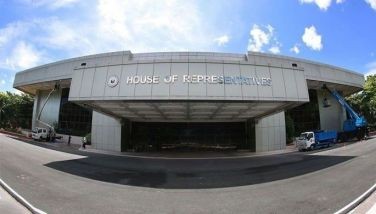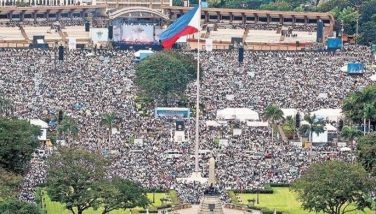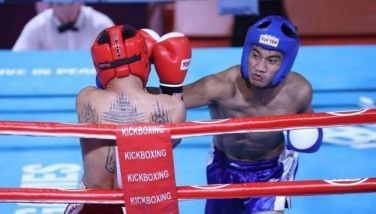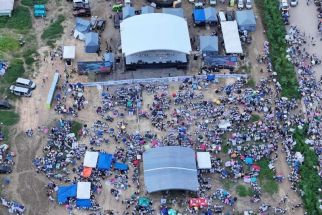Engine-driven rice transplanter is cheaper
June 12, 2005 | 12:00am
Farmers can avoid the labor-intensive and costly manual rice transplanting in puddled soils by shifting to an engine-driven mechanical transplanter.
The traditional manual transplanting of rice in puddled soils requires 10 to 20 man-days per hectare. During peak planting period, labor is scarce. This results in a demand for high wage rate, which makes farm production costly.
This situation led researchers from the Philippine Rice Research Institute (PhilRice) in Muñoz, Nueva Ecija to develop an engine-driven mechanical transplanter as an alternative. Engr. Arnold S. Juliano heads the project "Development of a mechanical transplanter for modern, efficient, and cost-effective rice transplanting." The Philippine Council for Agriculture, Forestry, and Natural Resources Research and Development (PCARRD) monitors the project.
PhilRice researchers studied commercially available transplanters and those developed by various agencies. These machines were considered for adaptation and improvement. The researchers came up with three prototypes, which were tested at their experimental field.
Project results indicate that it is efficient to plant rice using the engine-driven rice transplanter. The final prototype performed well in the field. The machine was able to transplant a hectare of rice field in nine hours at 2 kilometers per hour. Field efficiency was 85 percent and transplanting was 96 percent.
Computation based on 2004 prices shows that with an estimated retail price of P60,000, the engine-driven rice transplanter was four times costlier than the manual transplanter (P15,000), but one-third less expensive than a similar walking type imported secondhand transplanter (P90,000) and about four times less costly than the riding type, imported secondhand six-row transplanter (P250,000).
Researchers said that at the same custom transplanting service fee of P2,500 per hectare for all four transplanter types, using PhilRice engine-driven transplanter had the least operational cost of P1,343 per hectare, the least breakeven area at 52 hectares, and the shortest payback period of one and a half years. — Ofelia F. Domingo, S&T Media Service
The traditional manual transplanting of rice in puddled soils requires 10 to 20 man-days per hectare. During peak planting period, labor is scarce. This results in a demand for high wage rate, which makes farm production costly.
This situation led researchers from the Philippine Rice Research Institute (PhilRice) in Muñoz, Nueva Ecija to develop an engine-driven mechanical transplanter as an alternative. Engr. Arnold S. Juliano heads the project "Development of a mechanical transplanter for modern, efficient, and cost-effective rice transplanting." The Philippine Council for Agriculture, Forestry, and Natural Resources Research and Development (PCARRD) monitors the project.
PhilRice researchers studied commercially available transplanters and those developed by various agencies. These machines were considered for adaptation and improvement. The researchers came up with three prototypes, which were tested at their experimental field.
Project results indicate that it is efficient to plant rice using the engine-driven rice transplanter. The final prototype performed well in the field. The machine was able to transplant a hectare of rice field in nine hours at 2 kilometers per hour. Field efficiency was 85 percent and transplanting was 96 percent.
Computation based on 2004 prices shows that with an estimated retail price of P60,000, the engine-driven rice transplanter was four times costlier than the manual transplanter (P15,000), but one-third less expensive than a similar walking type imported secondhand transplanter (P90,000) and about four times less costly than the riding type, imported secondhand six-row transplanter (P250,000).
Researchers said that at the same custom transplanting service fee of P2,500 per hectare for all four transplanter types, using PhilRice engine-driven transplanter had the least operational cost of P1,343 per hectare, the least breakeven area at 52 hectares, and the shortest payback period of one and a half years. — Ofelia F. Domingo, S&T Media Service
BrandSpace Articles
<
>
- Latest
Latest
Latest
May 14, 2024 - 3:43pm
By Ian Laqui | May 14, 2024 - 3:43pm
April 10, 2024 - 5:12pm
By Ian Laqui | April 10, 2024 - 5:12pm
March 4, 2024 - 3:32pm
By Ian Laqui | March 4, 2024 - 3:32pm
March 4, 2024 - 2:12pm
By Kristine Daguno-Bersamina | March 4, 2024 - 2:12pm
February 17, 2024 - 2:31pm
February 17, 2024 - 2:31pm
Recommended




























